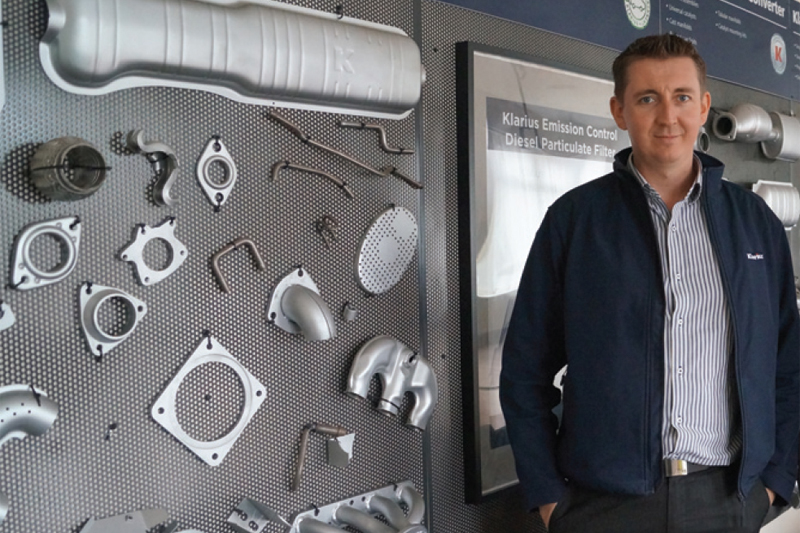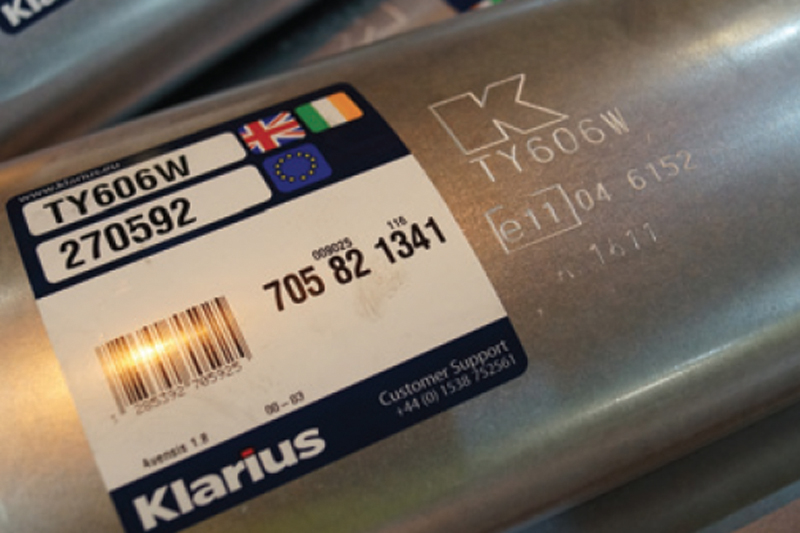
Klarius Products’ Head of Research and Development, Doug Bentley, reveals how the company produces the replacement exhausts that serve the aftermarket.
As anyone who has gone through the process of repairing their car knows, choosing high quality replacement components is key to securing long term vehicle reliability. This principle is especially true of exhausts.
Our range of over 11,000 products is designed to meet the exhaust replacement needs of passenger and light commercial vehicles on European and UK roads. We offer components to fit petrol, diesel and hybrid vehicles of almost any age and design.
This breadth of range and high standard of quality is enabled by an extensive engineering capability at Klarius in Cheadle, Staffordshire. Our process for developing and manufacturing aftermarket emissions control components is comprehensive. Manufacturing a premium replacement exhaust requires a quality driven approach from initial prototyping right up to the finished product. This attention to detail means we are established in original equipment supply for leading OEMs as well as the aftermarket.

Developing an optimal replacement exhaust
After we have assessed relevant market data to identify vehicles that require replacement exhaust components, we begin the prototyping process by looking closely at the OEM component. By conducting in-depth analyses, we can model the Klarius design in CAD programmes. Utilising the resulting 3D model, we then construct a physical prototype. We also source an example of the vehicle we are developing the part for – ensuring it is of correct marque, model and production year. Once this process is complete, testing can begin.
Testing has two key aims: to assess overall fit and operational performance. With the correct test vehicle, we can benchmark the prototype component against the OEM equivalent. Our dedicated track allows us to test the levels of noise at the tailpipe, noise during a drive-by, and levels of back pressure of both parts in-house. This helps to optimise the prototype component and ensure that it matches or even exceeds the performance of the OEM part.
A type-approval witness test is the next step. Government test engineers from the VCA or TÜV join us as we demonstrate both our prototype design and the OEM equivalent. After our part passes, we submit the relevant documents and design drawings, with the government agency then issuing our design with a type-approval certificate – the EU standard for legislative compliance.

Manufacturing a quality exhaust
With development now complete, we move onto the production process.
All of our exhausts are manufactured from a special grade of aluminised steel, which offers increased corrosion protection as well as improved resistance to the shocks and vibrations associated with road usage. For welds, we use a specially developed material solution that provides a strong, corrosion resistant connection.
Our exhaust production process is highly automated, which ensures consistently high quality. A prime example is the exhaust tube, which is produced by six-metre-high vector pipeline machines. Each machine forms and welds sheets of aluminised steel into a long loop of precision welded tube. This tube loops above the machine and down to the bending and cutting head. Operating on its own hydraulic system, the head can turn 360° continually in any direction. This allows for varying exhaust tube designs to be easily accommodated.
Due to our rigorous testing regime, we can also ensure the quality of additional devices within the exhaust design. Our catalytic converters incorporate the correct levels of precious metals such as rhodium, platinum and palladium, so that the device reduces emissions to meet type approval standards to Regulation R103. Internal baffles and noise reduction packaging is optimised to ensure that OEM levels of backpressure and efficiency are also preserved. Fitting kits are also offered with all our exhaust designs, which means straightforward exhaust installation on the ramp and a long service life.







